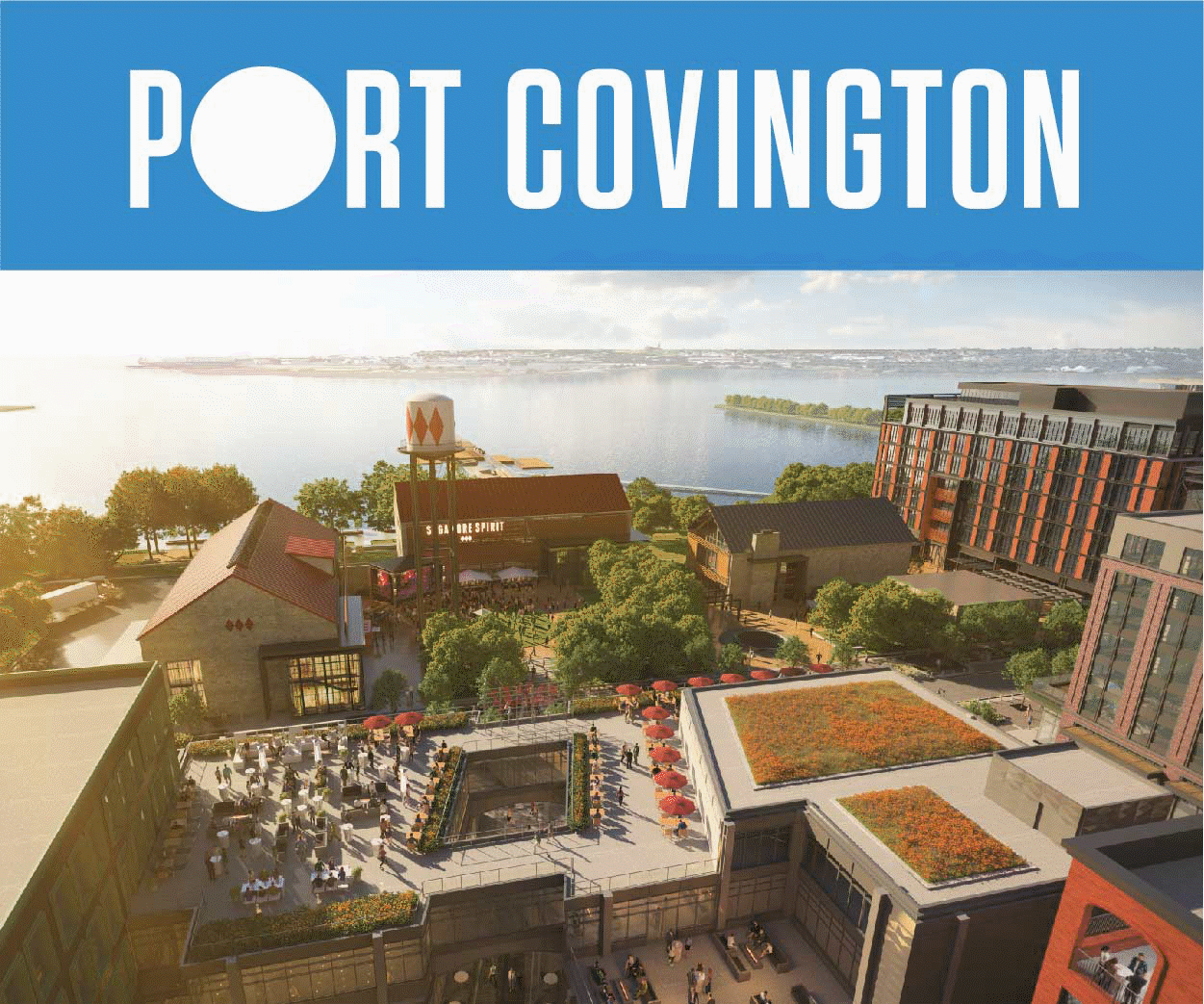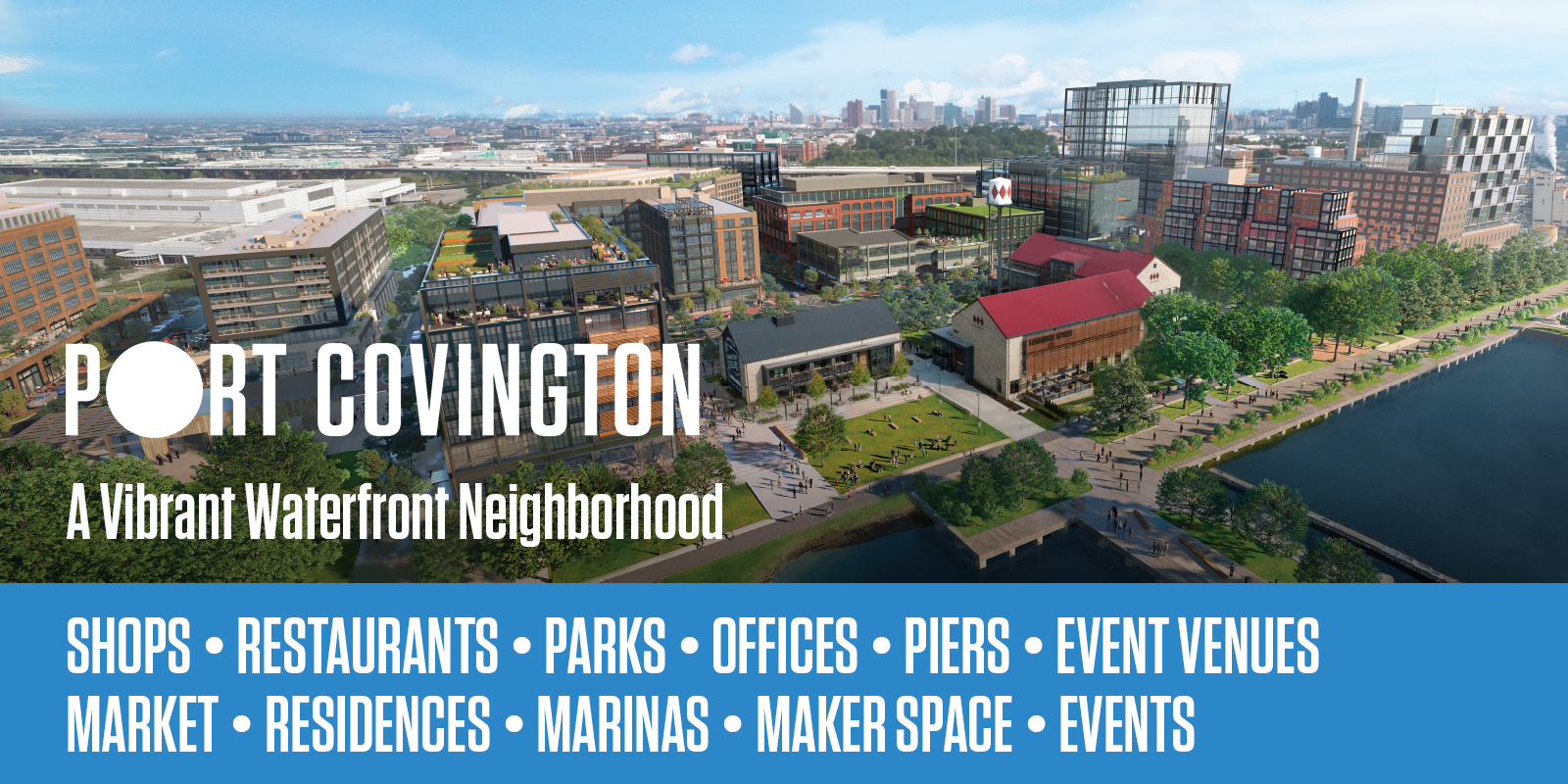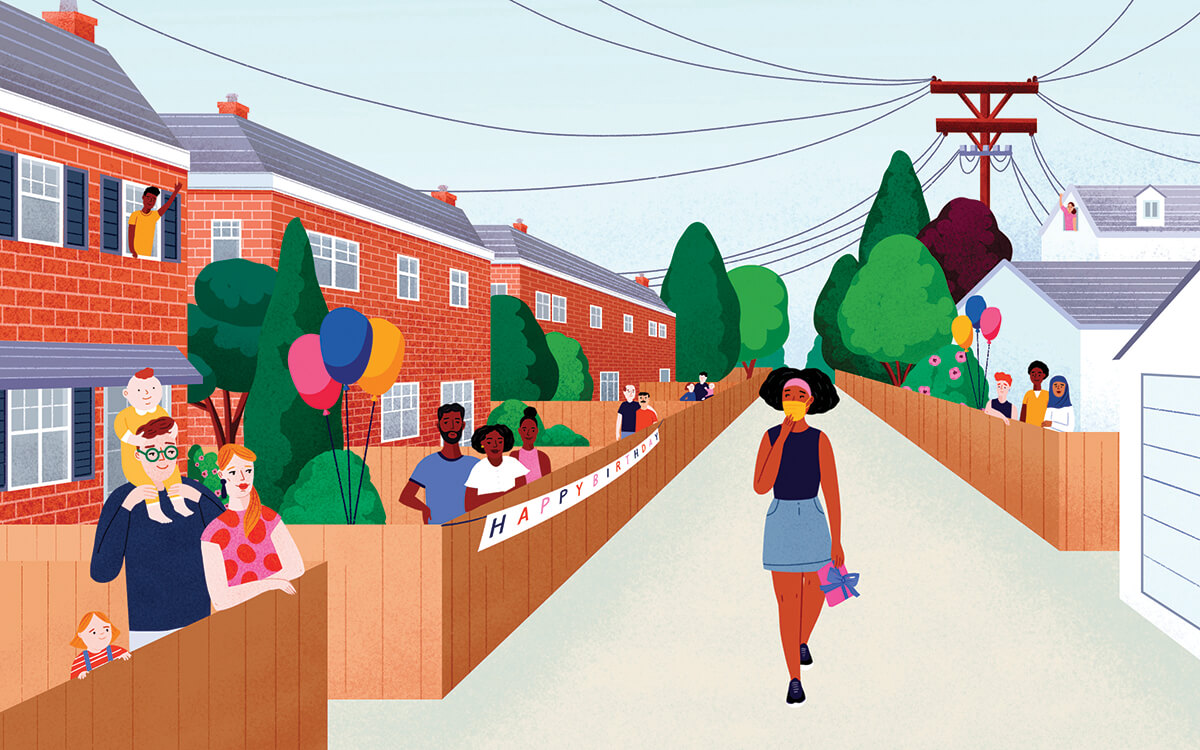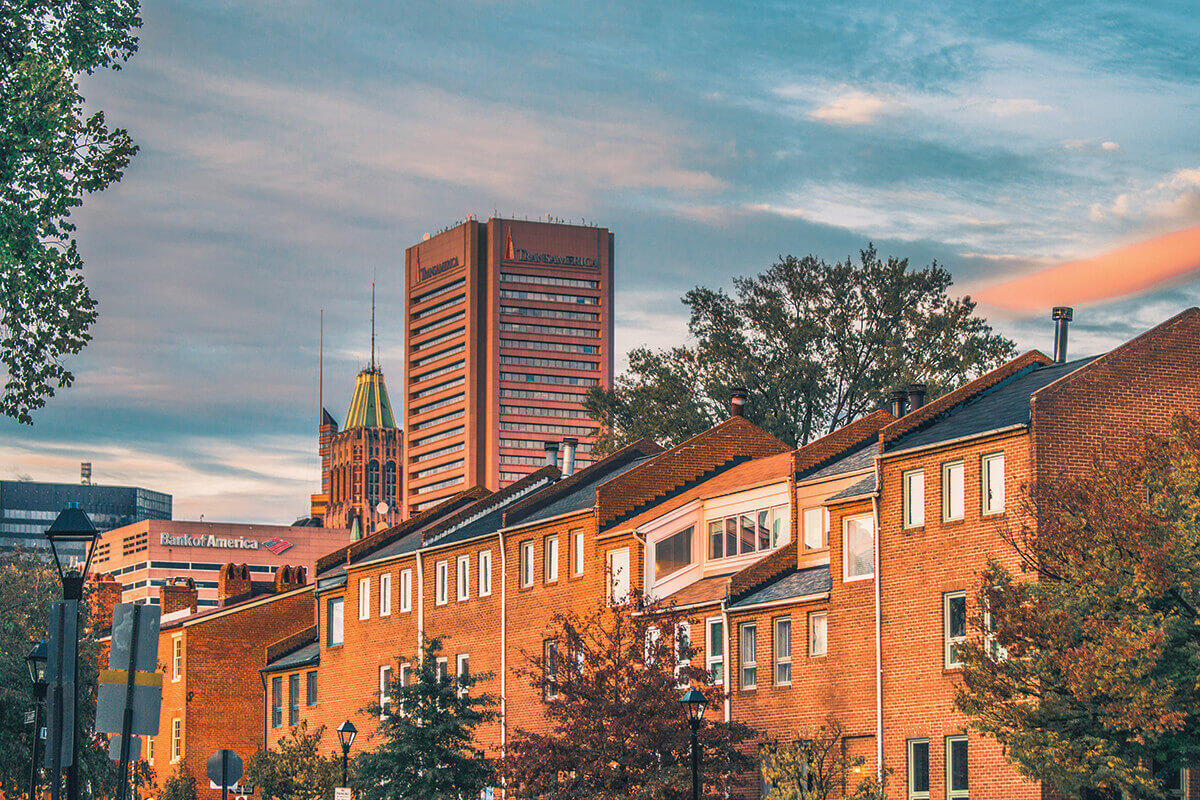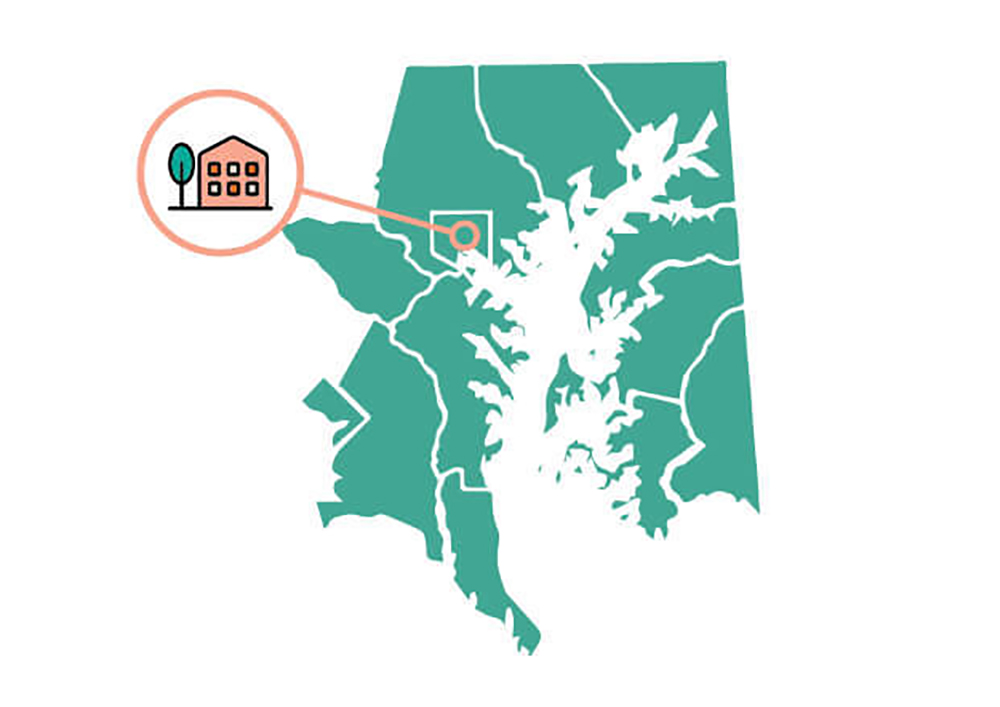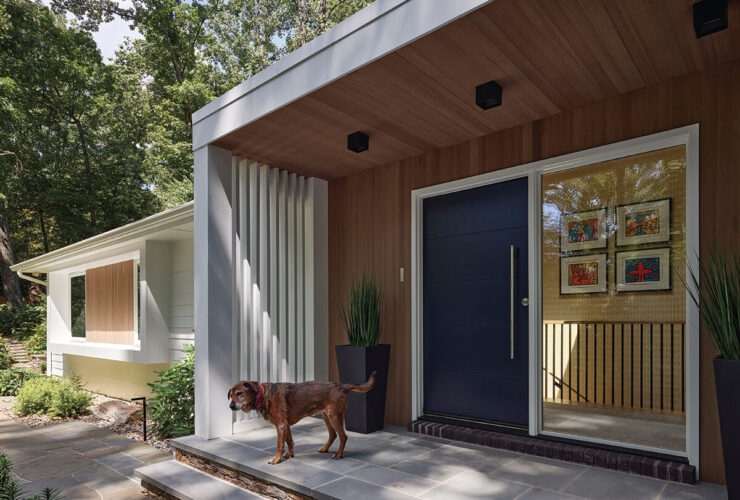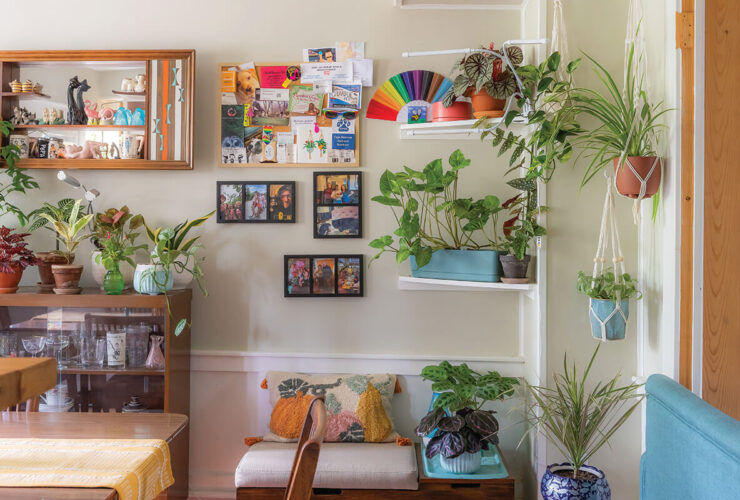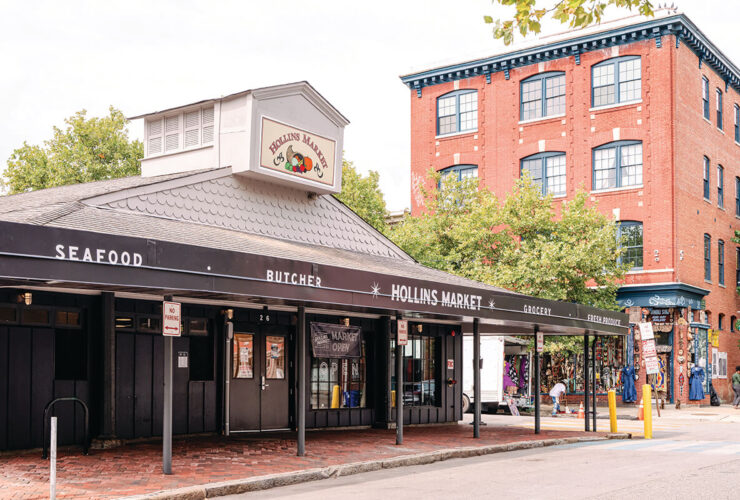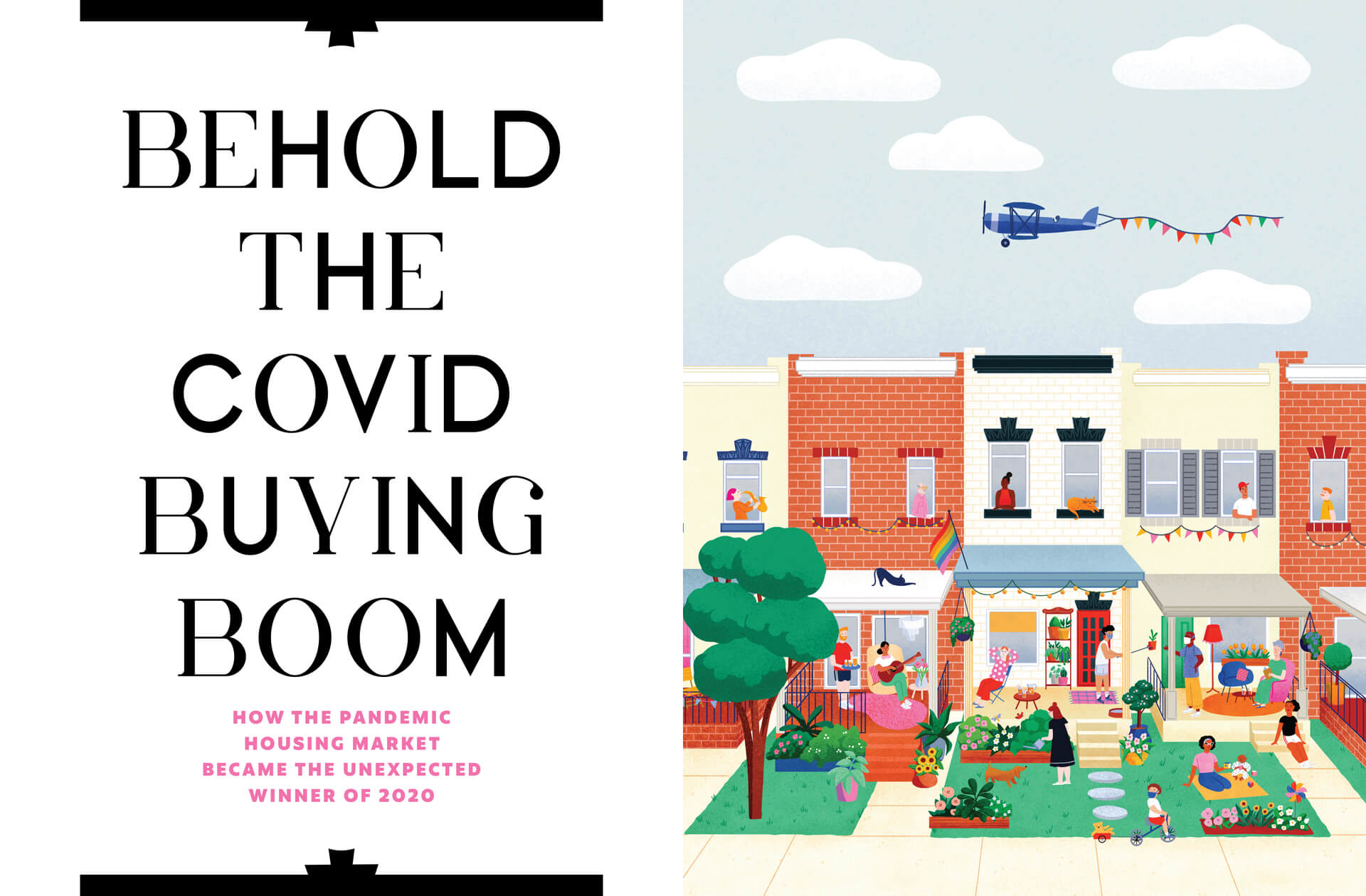
Home & Living
Behold the COVID Buying Boom
How the pandemic housing market became the unexpected winner of 2020
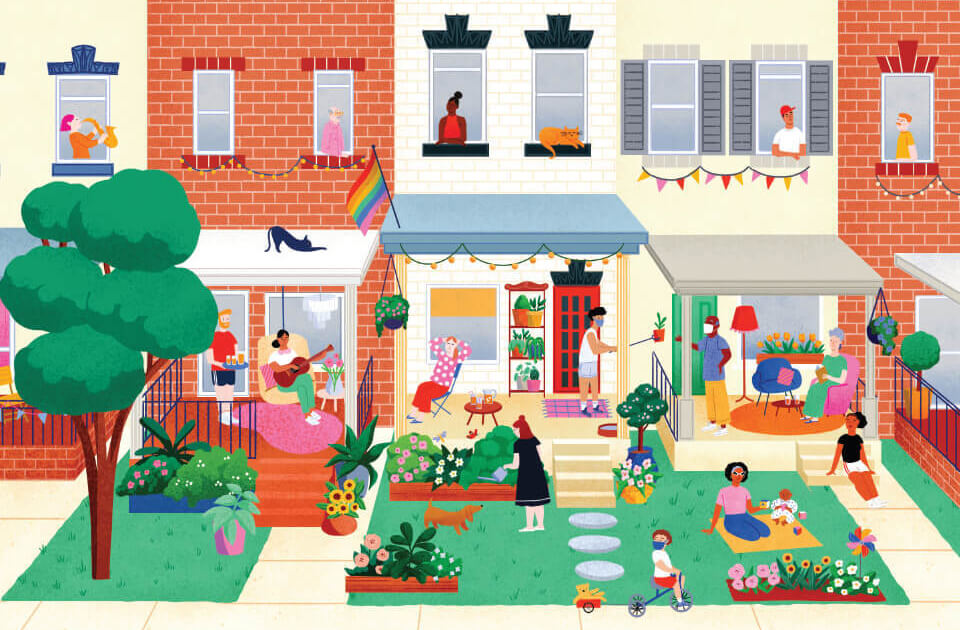
ICK AND KATE COLVIN LOVED their home in Homeland Mews. In their three years of ownership, they replaced the roof, updated the floors, and remodeled the kitchen and baths. They enjoyed their neighbors. Their two preschool-age daughters played in the front yard with other local children. Still, things were getting a little tight in the house. With a new baby on the way, the couple started thinking of selling and looking for a larger home. Then the pandemic arrived shortly after the birth of their son.
“We had no backyard, just a small brick patio and no room for a swing set,” says Kate. “We were quarantined at home with three kids who will only get bigger and Nick working from home. Even though we were thinking about moving before the third baby, the longer we were in the pandemic, the more of a driver it became.”
The Colvin’s story isn’t unique. After a brief drop in home-sales activity during the worst of the pandemic lockdown last year (and that was in the spring, when there’s usually a brisk market), the residential real-estate market rebounded with such gusto that Realtors and inventory can barely keep up.
Stuck at home for weeks on end, some consumers realized that their home wasn’t working for them or they simply didn’t like it. Buyers also wanted to capitalize on all-time low rates to buy homes more suitable for social distancing. And free of commutes in the new remote-working world, they were not hemmed in by geography. Then, a new segment turned up the market heat: millennials. Once written off as a generation of renters, they realized they could buy a home and pay less per month than their rent.
The Colvins benefited from another plus that sellers are seeing: All the offers had waived the appraisal contingency.
For the first time ever, according to BrightMLS, the multiple list service for the Mid-Atlantic, low-interest rates and pent-up demand pushed the Baltimore region’s yearly median sales price over $300,000. That’s up 8.7 percent over 2019. And the average number of days on market dropped to single digits—BrightMLS reported that units came off the market faster in December 2020 than they had in that month for a decade.
“The hot market is being driven by interest rates. It’s absolutely free money,” says Cindy Ariosa, a BrightMLS board member and a senior vice president at Long & Foster. “Every single county, every single town, had price appreciation. Look at Maple Lawn in Howard County—sales doubled in just that one area. Otterbein in the city gained triple digits, 128 percent.”
Although real estate was deemed an essential business by the state, there were initial COVID-related challenges for Realtors. So they adapted. That meant socially distant, appointment-only showings, virtual tours, and Facebook Live “open houses,” while buyers, sellers, and Realtors all took precautions to ensure safety. Inspectors and photographers requested no one be present when they were working and wore masks, boots, and gloves, for example. Many appraisers moved to drive-by or desktop appraisals, never even setting foot inside a property.
Even so, the Colvins were anxious about the process of buying and selling in a pandemic.
“I was terrified of people coming in our house, especially with a newborn,” says Kate.
“Having kids and wanting to avoid too much stress from a lot of moving parts, we purchased a home in Hunt Valley first, then put Homeland Mews on the market,” says Nick. “We closed on Hunt Valley in August and had Homeland Mews queued up and ready to go. Our agent had 16 showings set up, so we decided to just get out of the house and went to the beach for four days.”
The Colvins had five offers within days, all above the asking price.
“We were fortunate that our home was in a desirable neighborhood and updated and the market activity was really heating up,” says Nick.
And the Colvins benefited from another plus that sellers are seeing: “All the offers had waived the appraisal contingency,” Nick says.
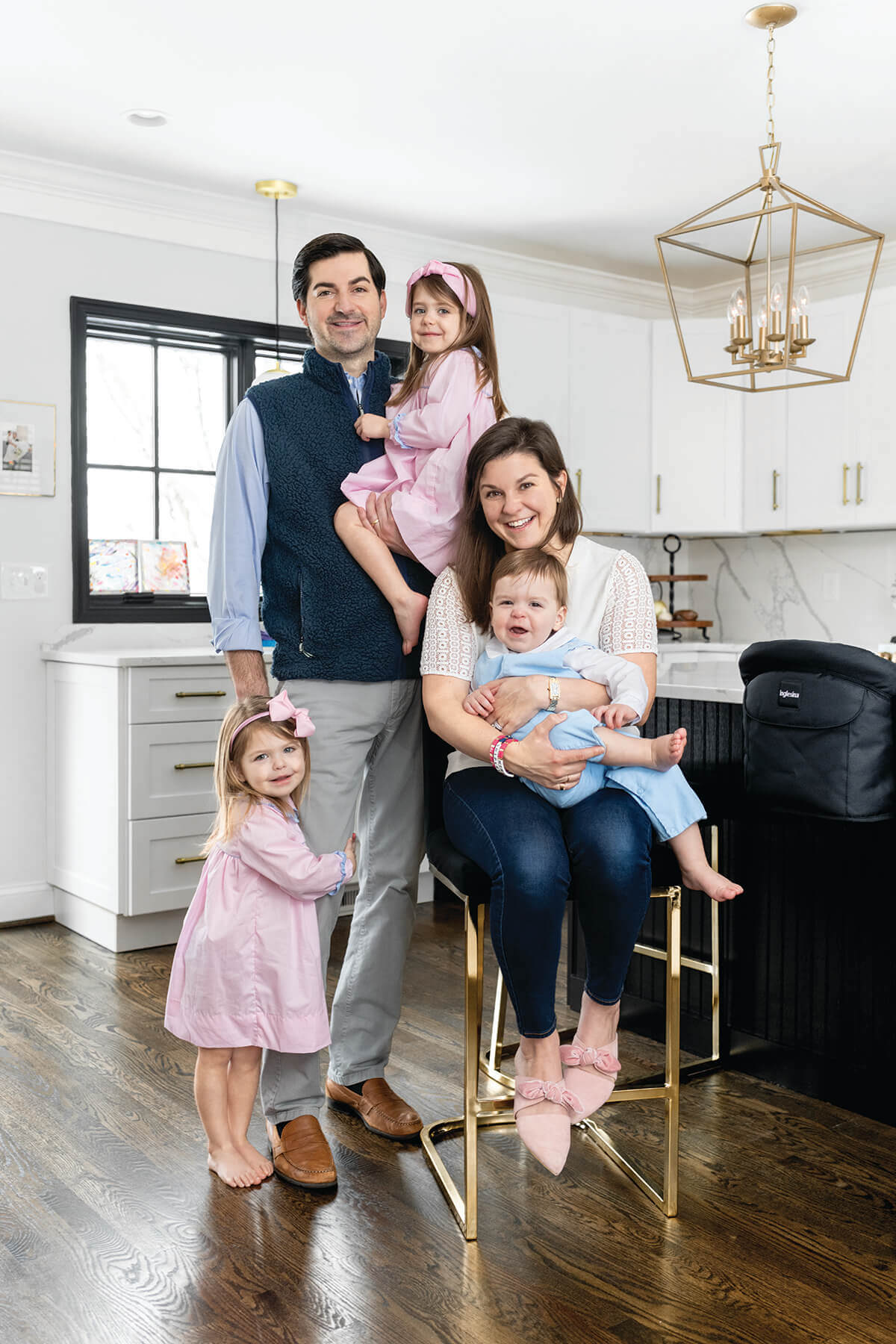
The Colvins had five offers within days on their
Homeland Mews house, all above the asking price. PHOTOGRAPHY BY MIKE MORGAN
HOW WE GOT HERE
The low interest rates, high demand, and low inventory may be driving residential real estate today, but the groundwork for this market frenzy pre-dates the pandemic.
“Prior to the pandemic, Realtors were complaining about a lack of inventory,” says Anibar Basu, CEO of Sage Policy Group. He says that the housing boom of the early 2000s resulted in a profusion of housing construction, but after the bubble burst in 2006 and the foreclosure crisis that ensued, homeownership and single-family construction both declined. Even as the economy healed, housing starts remained low, causing inventory to dwindle. At that point, millennials were still avoiding buying and pushed a boom in rental apartments.
Of course, the job losses that followed the lockdowns created an even sharper reality of haves and have-nots.
“While we lost 22 million jobs, those were mostly entry-level positions, like salon workers, at a stage when they were likely to be renters,” says Basu. “The job stability was among white-collar workers,” who would “commute” via Zoom.
He adds that pre-pandemic, millenials were coming of age and forming families. The oldest in that generation are now 40, which means they’re ready to buy, especially after many of the amenities of urban apartment life closed—a community pool, in-house gym, nearby restaurants.
Dee Dee Miller, president of the Maryland Association of Realtors (MAR) and an associate broker at Long & Foster in Severna Park, puts today’s price boom in perspective. She explains that prices in the early 2000s were high—then plummeted after the housing bubble burst. The market has been slowly chipping away at that loss for over a decade.
“Year over year prices are up, but if you do the math over 15 years, we’re on par with pre-2006 prices—we’ve gained back what we lost,” she explains. “Only now, you’re buying a house at the same price it was in 2006 but with a rate that’s one-third of what it was and with higher wages. That’s mind-boggling buying power.”
In this fertile climate, homes saw multiple offers. Buyers were frustrated time and again and Realtors were exhausted by the pace of work. Offers were written waiving even the most basic contingencies, like a home inspection. The residential real estate market was not just hot, it was frenzied.
BUYER’S REMORSE
LOOK BEFORE YOU LEAP
IN THE FRENZY of the past year’s seller’s market, buyers desperate to have their bid accepted on that house they want so much are increasingly willing to forego many of the traditional due-diligence steps.
Those would include checking out the neighborhood to get a reading on traffic, schools, or crime, and maybe talking to neighbors. An appraisal? Some buyers paying in cash are skipping that, too. And most important: a thorough inspection. In some cases, the buyers are even ready to close the deal after barely seeing the house.
“I know personally of a few sales where the buyers never saw the home in person before coming to settlement,” says veteran Realtor James Baldwin of Berkshire Hathaway. “And, in some cases, settlements happened remotely and out of state.”
But caveat emptor: They could be in for some unpleasant surprises in their new home, ranging anywhere from water damage and mold to termites, electrical problems, or rowdy renters next door.
“It certainly has been a bit of a circus at times during this pandemic,” says Dee Dee Miller, president of the statewide Maryland Realtors association. “With buyers competing for homes with multiple offers, many have tried to sweeten their offers by skipping the inspection process or even agreeing to take a home ‘as is.’ While actions such as these can win a multiple-offer battle, buyers need to be mindful of the transaction and what is in their best interest.”
Of course, Realtors will do all they can to assure a successful purchase, Baldwin says, but, again, let the buyer beware.
“My team and I have sold three homes since the pandemic where the buyers only saw the home via FaceTime and Zoom showings,” he says. “In one case, the buyers are relying on good friends to vet the community and house on their behalf. Our brokerage now offers a form for buyers to sign acknowledging they have not seen the home in person and thereby helping to alleviate some of the scariness for listing agents and buyers’ agents. It’s a bit daunting for us as Realtors, for sure.”
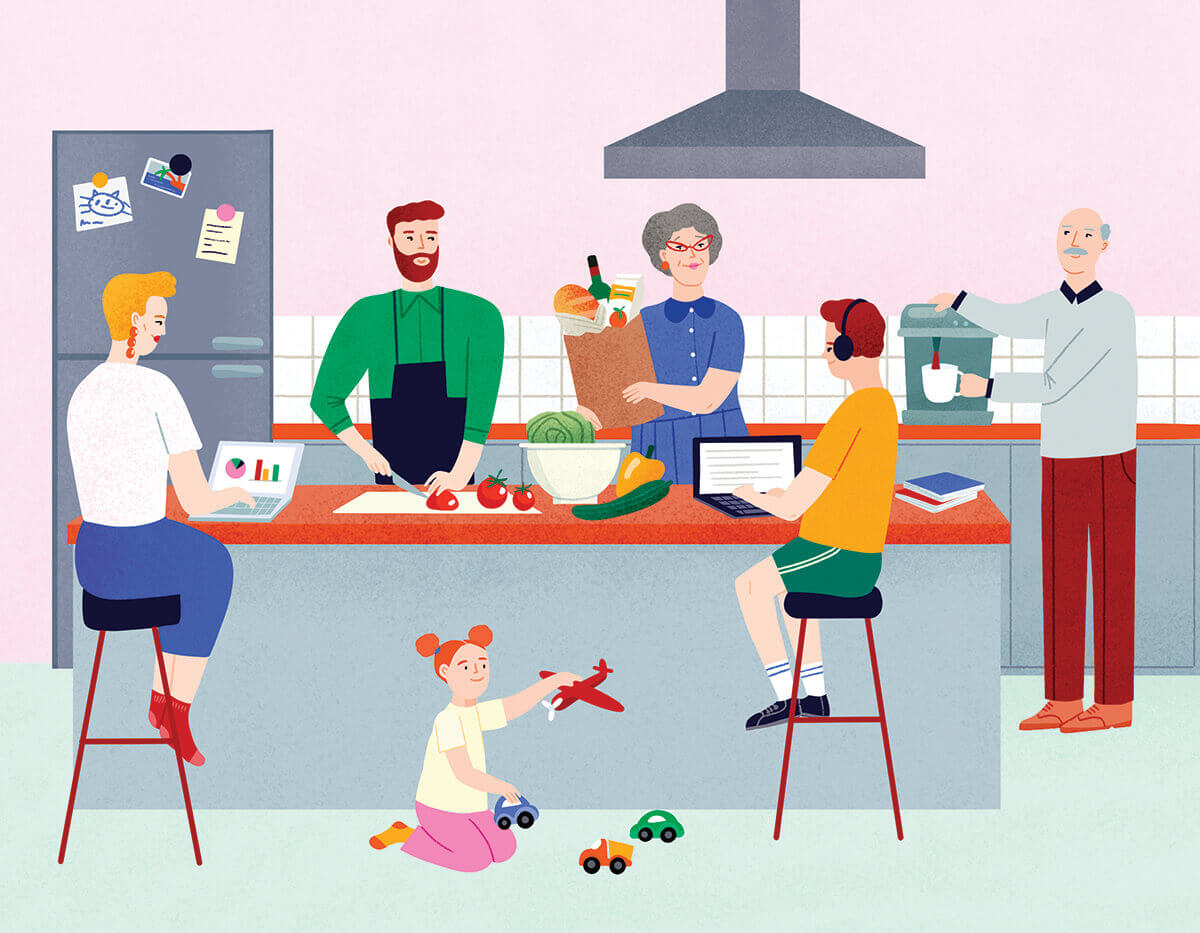
THE QUARANTINE HOUSE
There were a number of unique aspects to the past real-estate year, aspects that the industry is still seeing.
For one, buyers on the pandemic market aren’t just buying anything. They’re looking for a way of life to fit the new normal.
“There’s a shift from small to large, needing green space, needing an office, wanting a home gym, wanting a pool,” says MAR’s Miller. The inability to travel meant buyers began looking at their homes not just as a place to function for work and school-from-home, but as a retreat.
“Because they’re so much uncertainty, buyers need a place that is certain, they need their space and a feeling that this is their domain where they can thrive no matter what’s going on outside,” says Miller.
As work-from-home (WFH) went from an emergency couple of weeks to a fullblown lifestyle change that continues today, buyers wanted more than just additional elbow room. Those who were living in congested, expensive areas purely to be close to work suddenly wanted out. The most striking example is the buyers fleeing expensive cities like Washington, D.C., and the big winners have been the suburbs and “urban burbs.”
“The hot market is being driven by interest rates. It’s absolutely free money.”
“Urban burbs are areas like White Marsh that are still walkable and close to restaurants but you’re still further out,” says Long & Foster’s Ariosa, noting that many popular city restaurants were already opening satellite locations in these areas pre-pandemic to meet the needs of younger buyers who were leaving Baltimore but still wanted to keep some of their previous urban lifestyle.
Despite talk of people fleeing to rural areas, it was the quaint suburban neighborhoods— Hampstead, Mt. Airy, Edgewater, Parkville, Hunt Valley—that have experienced the greatest gains. With inventory so low, buyers (especially firsttimers) slimmed their wish lists, not only forgoing desires like granite countertops and a garage, but purchasing homes that require renovation or remodeling.
“Buyers are outpacing demand such that there’s not a single price point that isn’t benefiting,” says Miller. “At any price point, you’re seeing multiple offers and sellers getting well over asking price.”
But not all this activity has been in the suburbs. There’s been good news, too, for single-family housing in Baltimore City, since there are lots of urban homes with yards and near parks.
Nationwide, large expensive cities like New York and Washington, D.C., were the losers of the pandemic. Residents no longer wanted to pay an exorbitant price to live in a shuttered city on top of other people. But Baltimore didn’t see a mass exodus because it’s not as pricey as other metropolises. In fact, BrightMLS data indicates that sales prices in the city rose 12.5 percent to an average of $180,000.
Patty Kallmyer, president of the Greater Baltimore Board of Realtors and an agent at Next Step Realty, notes that unlike the inventory-strapped surrounding counties, Baltimore City maintained more units for sale and neighborhoods like Canton and Hampden saw large sale price and volume increases because they still offered good value for younger buyers.
The second-home market also exploded.
“Ocean City’s inventory is usually consistent at 800 units for sale,” says Ariosa.
“Now there are 200 units.”
“These are not just second homes,” she adds. “You can live and work where you want to, not where you have to, and with pandemic travel restrictions, you can drive two hours to Ocean City and feel like you’re living on vacation. Later, you can always have it as an investment property.”
A less discussed driver of home sales is the need for multi-generational housing. This trend was visible pre-pandemic on a small scale as older kids moved back in with parents, but continues to grow as the population ages.
“Fifty percent of all sales across the country in 2020 and continuing into 2021 had some sort of multi-generational aspect,” says Kallmyer. “People had to pool resources because of economic hardship, and because of the pandemic, we had to care for our families.”
That, too, is driving demand for bigger homes, Ariosa says.
“Homes need to be bigger for multi-generational living,” she says. “Frederick, Harford County, these are areas with new construction capacity where you can build homes that fit a new way of living.”

INVENTORY GRIDLOCK
As mentioned, the biggest problem facing residential real estate now has nothing to do with COVID-19. It is lack of inventory. With an absorption rate—that’s days it takes to sell—of less than one month, some sellers won’t even go on market because they fear they’ll have nowhere to move. Others, like the Colvins, buy their house first before putting the old one of the market.
There is no quick fix for the inventory conundrum. Sage Policy Group’s Basu says that much of the problem relates to laws governing land use, which may need to be overhauled to maintain protection of green space and agricultural heritage, while also providing for higher-density housing areas on fewer acres.
Density dovetails with another issue plaguing not only Baltimore, but the nation: affordability. Because high-density housing is generally cheaper per unit, a shortage has a bearing on fair housing and equal access for all to homeownership, as it is often minorities that are in greatest need of affordable homes. These are issues Miller works on closely.
At MAR, Miller says, they’re working with the Department of Housing and Community Development to create legislation that would allow first-time buyers to put money for a down payment in a tax-free home savings account.
“Other legislation we’re working on now is to open up new housing starts or areas for more zoning density or zoning for cottage clusters and auxiliary dwelling units, ADUs, the so-called ‘mother-in-law suites,’” she says. Such new laws might begin to address the affordability issue.
“We need to come together to decide areas that make the most sense for concentrated density,” Miller notes.
Along with the pandemic, the past several months have seen a cultural reckoning on race that is still ongoing today. To that end, GBBR created a Diversity, Equity and Inclusion Task Force to advise real estate agents on how to abide by fair housing laws. Kallmyer says they also are expanding unconscious bias training and working with legislators to remove potential areas where bias could slip in. She would like, for example, to see the complete removal from the process of buyer “love letters”—the practice of sending a letter to the seller gushing about the house and describing how the buyer envisions their life once they move in. This would be so sellers can’t be swayed to select an offer from a buyer who looks or sounds like they do.
“We think bias doesn’t exist, but it does,” says Kallmyer. “We need to have a conversation about bias, expose it, and have more robust education for agents.”
A CASE IN POINT IN CATONSVILLE
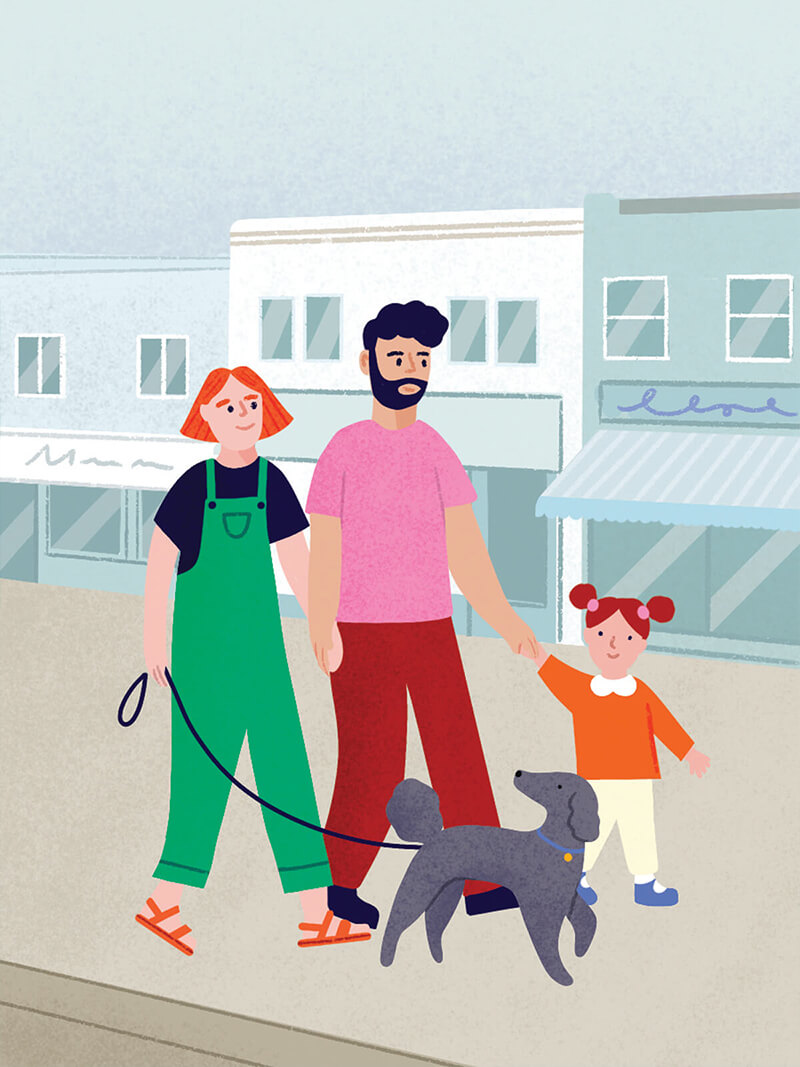
CATONSVILLE HAS ALWAYS been a nice place to live, but the pandemic blew the doors off this little enclave outside the city. With 141 units sold (up 26 percent over 2019) and a median sold price of $345,000, this neighborhood is hotter than ever.
“Buyers are leaving the city to get more space, but they still want parks and walkability,” says Matt Spence, a lifelong Catonsville resident and team leader at Keller Williams Integrity. He points to area assets like Patapsco State Park, a booming main street with unique restaurants and shops, and a reputation for being family-friendly.
“We have a lot of different types of homes at a lot of price points,” Spence adds. Oak Forest features the classic turn-of-the- 20th-century Catonsville homes, but buyers are also looking at [newer models in] Old Catonsville and Patapsco Woods.
“One trend we’ve seen is first-time buyers are buying more house,” says Spence. “A first-time buyer used to buy a $300,000 townhouse; now they’re buying a $400,000 single-family home, I assume due to low interest rates and the fact that they’re valuing a home lifestyle.”
HOME & LIVING
Otterbein Sees a Boom
Like a lot of trends, the real-estate boom in the South Baltimore neighborhood is COVID-related.
THE DRAW OF THE NORTHERN COUNTIES
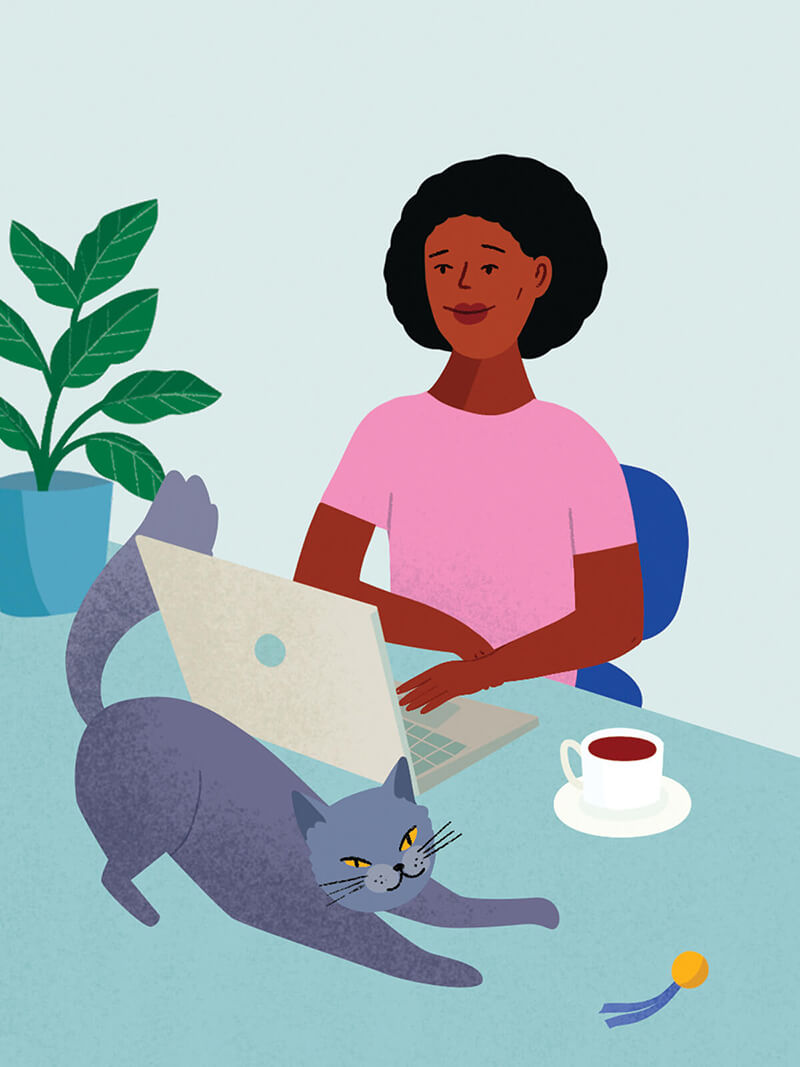
IT USED TO BE that many homeowners considered Bel Air too far from any city. Not so anymore. “Especially in the rural arena where I work, people want fresh air and a big yard,” says Elisabeth Yeager, an agent with Next Step Realty and leader of the Yeager Homes and Farm Group. “There’s a higher demand for no neighbors.”
Yeager now sees buyers moving to Jarrettsville, Forest Hill, Pylesville, Millers, and Freeland, areas where there was more inventory going into the pandemic because they were less desirable pre-COVID. These towns in the northern reaches are far from grocery stores and often lack high-speed internet access. But even the latter is no longer a deal-killer.
“People are willing to compromise on internet, especially now with 5G, and work with hot spots,” says Yeager.
Yeager says her buyers are universally people leaving Baltimore and the near-in suburbs to find more acreage and fewer neighbors.
“The pandemic has restructured work,” she says. “If I live in Freeland and only have to go to work once or twice a week, that’s fine. I’d rather be looking at my pool or my nice backyard than be in a townhouse closer to the city that’s the same cost, but I’d be looking at someone else’s window.”
FUTURE UNKNOWN
No one could have predicted the residential market would soar as it did in 2020, and experts say there is too much uncertainty to possibly predict what may come next. Right now, savings are at an all-time high and, if the pandemic gets under control, there’s pent-up demand that could fuel a robust economy. But questions remain: Will rates start to tick up if the economy begins to rebound and vaccines enable businesses and schools to reopen? What is the future of work?
One thing is certain, though, home life is forever changed.
“The desire to socially distance or to work out at home with the gyms closed, these are pandemic anomalies,” says Basu. “But society will probably shift more than we expect. People now know they can be productive working from home and workers will demand WFH, at least some of the time, especially millennials who have a reputation for seeking work-life balance.”
HAPPY IN THE ‘BURBS
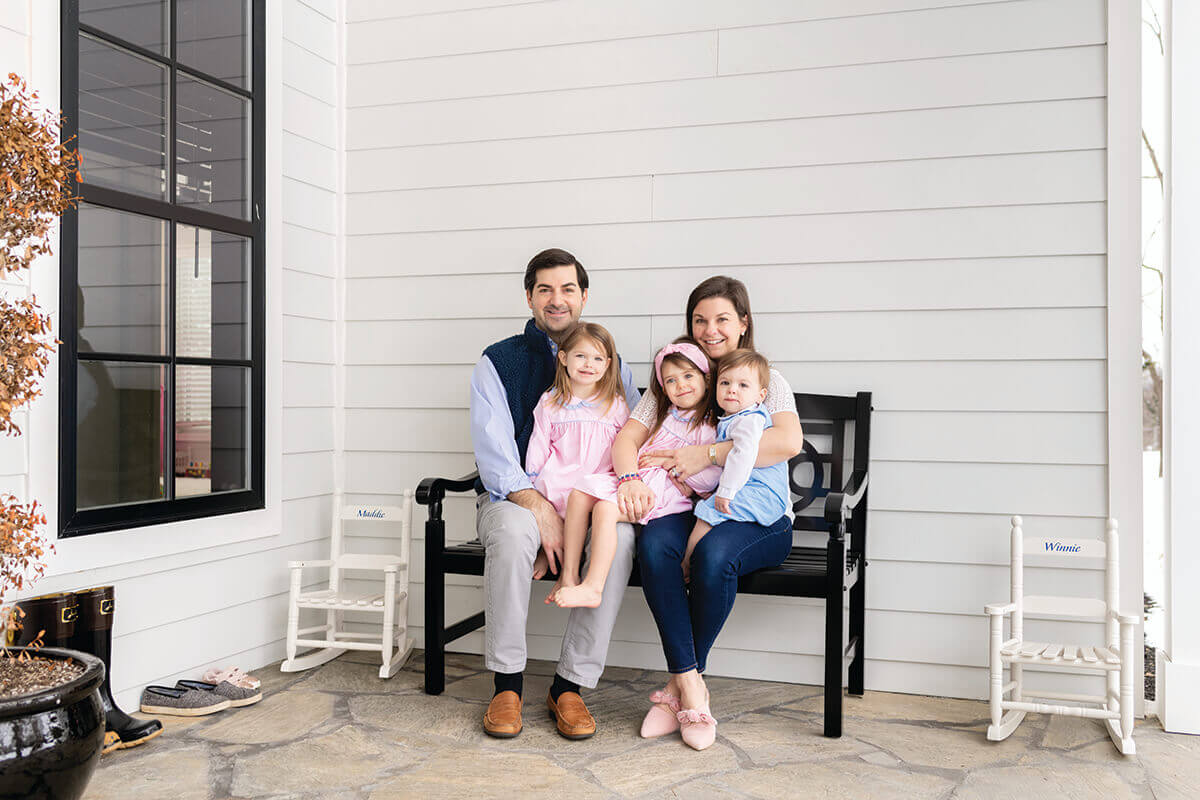
Photography by MIKE MORGAN
So far, Nick and Kate Colvin are really happy with their move, even though their big, new house in Cockeysville-Hunt Valley is much farther from town than their old house in Homeland Mews. And while six bedrooms might sound like a lot, one is used as a playroom, one is for Kate’s mother (who spends several evenings a week with the family), and another is an office. “At first, I thought this area was too far out,” says Kate, “but because we moved during the pandemic, we’re just staying in the house and this house has so much to offer our family. Maybe when things open up, it will take a little longer to get places, but we have everything we need right here.”

